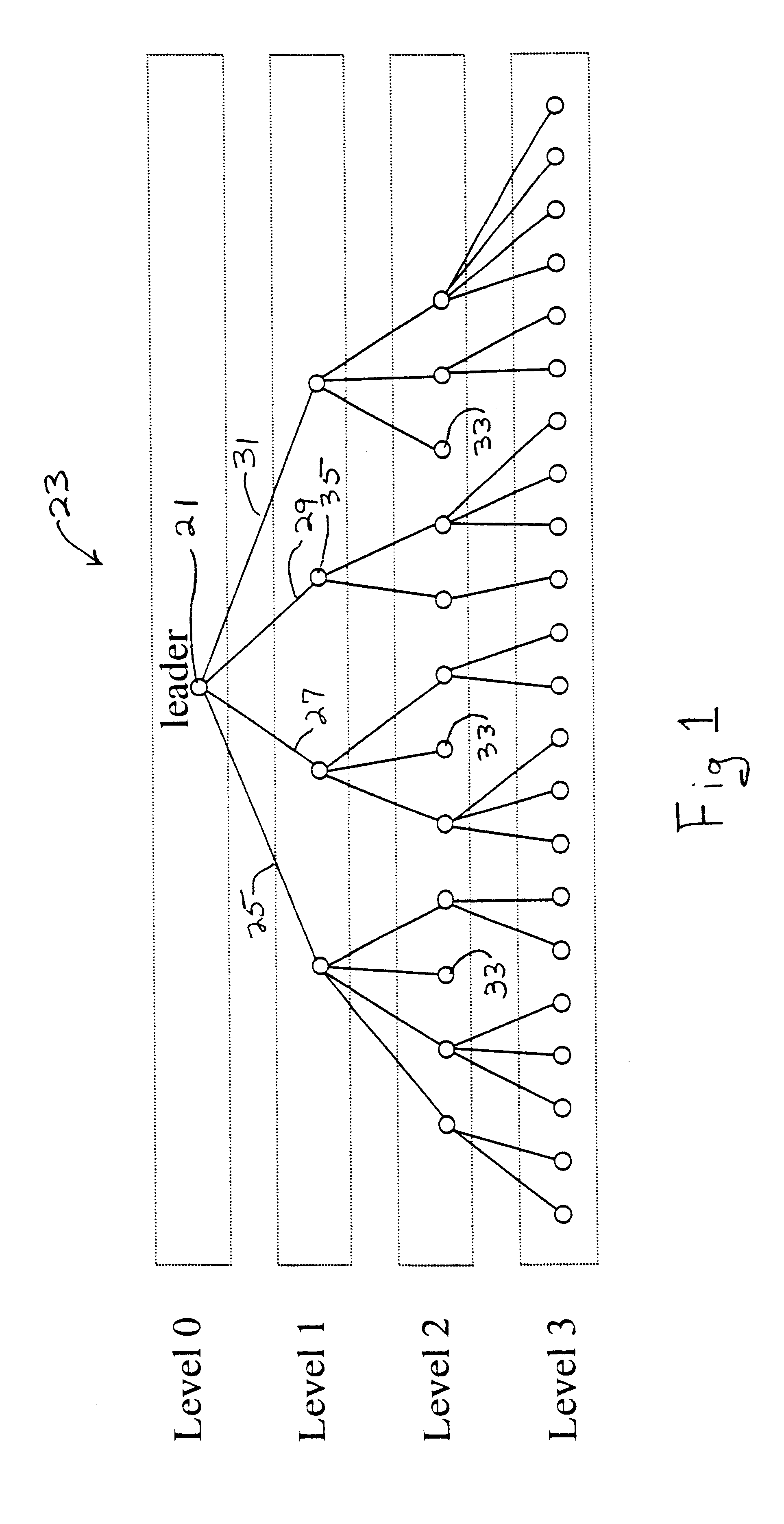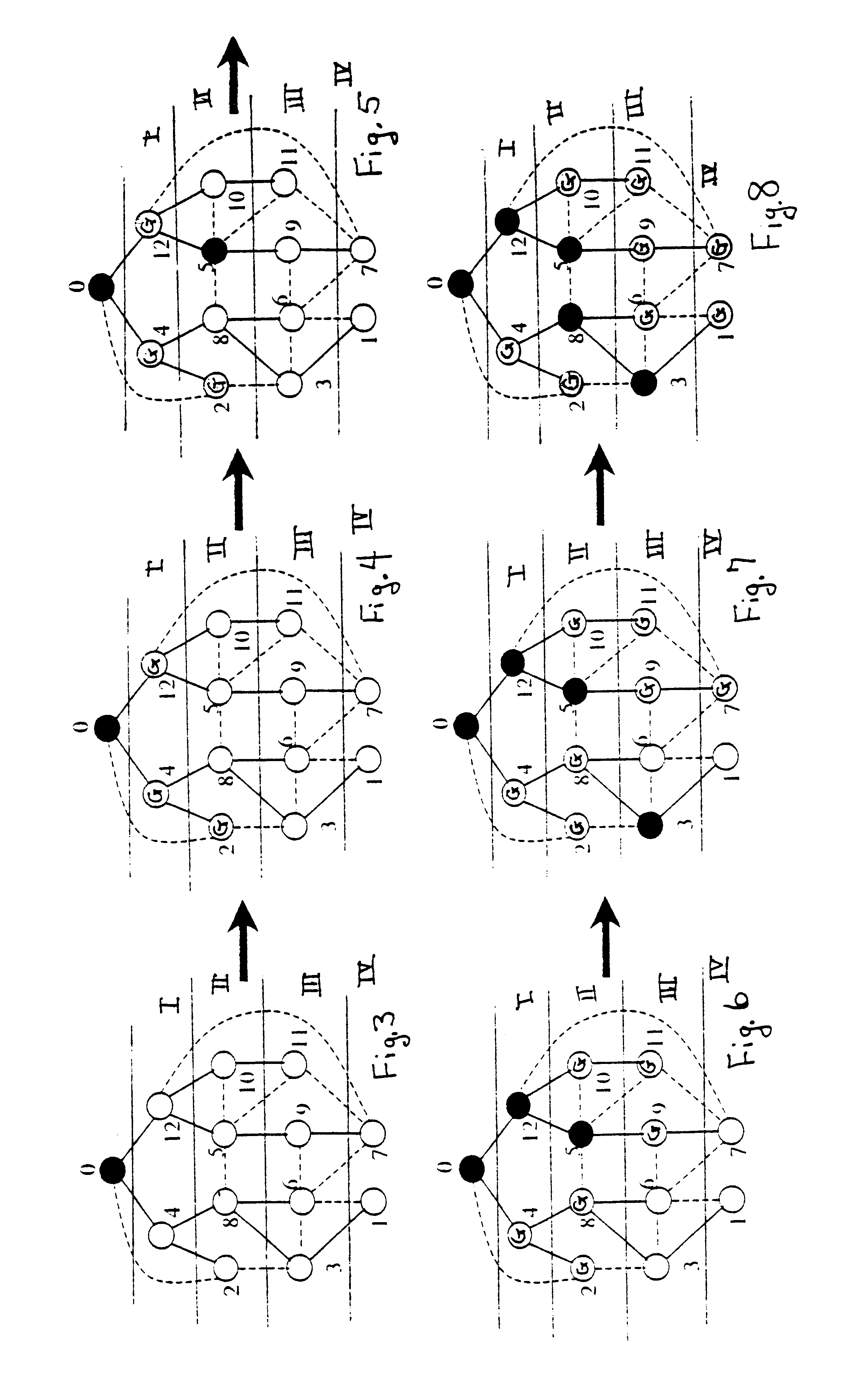Technique for establishing a virtual backbone in an ad hoc wireless network
a virtual backbone and wireless network technology, applied in the field of ad hoc wireless networks, can solve the problem that the creation of a communication backbone in an ad hoc wireless environment cannot be achieved in a theoretically fewer number of messages, and achieve the effect of efficient ad hoc wireless network backbone, short message length and low cos
- Summary
- Abstract
- Description
- Claims
- Application Information
AI Technical Summary
Benefits of technology
Problems solved by technology
Method used
Image
Examples
Embodiment Construction
A distributed algorithm for building wireless ad hoc network backbones according to the present invention generally includes three phases: the first, leader election phase, the second, level calculation phase, and the third, backbone construction, phase.
Referencing FIG. 1, among the transceivers, shown as circles, the leader election and tree construction phase elects a leader transceiver 21 and constructs a spanning tree 23 of the transceivers, according to techniques as now or hereafter known in the art. The spanning tree 23 is rooted at the leader transceiver 21, thus “root” and “leader” may be used synonymously hereinafter. A distributed algorithm for leader election as known in the art, such as, e.g., is disclosed in I. Cidon and O. Mokryn, Propagation and Leader Election in Multihop Broadcast Environment, 12th International Symposium on Distributed Computing (DISC98), pp. 104-119, September 1998, Greece. can be adopted. Note that any criteria can be used to define the leadersh...
PUM
 Login to View More
Login to View More Abstract
Description
Claims
Application Information
 Login to View More
Login to View More - R&D
- Intellectual Property
- Life Sciences
- Materials
- Tech Scout
- Unparalleled Data Quality
- Higher Quality Content
- 60% Fewer Hallucinations
Browse by: Latest US Patents, China's latest patents, Technical Efficacy Thesaurus, Application Domain, Technology Topic, Popular Technical Reports.
© 2025 PatSnap. All rights reserved.Legal|Privacy policy|Modern Slavery Act Transparency Statement|Sitemap|About US| Contact US: help@patsnap.com



